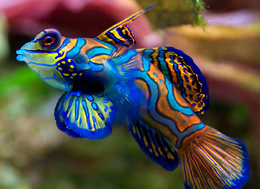Barriers make coral reef fish better, more varied
 A study of various types of coral reef fish has highlighted the barriers they face in evolution; barriers which define species and help create new ones too.
A study of various types of coral reef fish has highlighted the barriers they face in evolution; barriers which define species and help create new ones too.
Researchers at the Australian National University have surveyed the various challenges faced in the daily lives of three different families of coral reef fish (wrasses, butterflyfishes and damselfishes) across five separate regions. Using DNA analyses, the team was able to pinpoint particular moments in the evolutionary paths of the fish.
Coral reef fish face two kinds of barriers, according to researchers, there are ‘hard’ and ‘soft’ challenges to overcome. A hard challenge would be a physical impediment, like a land bridge or man-made block which causes a population to split, eventually forming separate species. A soft barrier may be an inconvenient distance or strong ocean current, which also leads to separation and subsequent evolution.
Dr Peter Cowman says “A ‘vicariance event’ is the point in time when a barrier has resulted in the formation of new species.”
“We expected that vicariance events associated with hard barriers would be quite clear in the molecular record and reflect the age of the barrier itself, and soft barriers would have a wider range of associated ages since the barriers themselves seem quite porous.”
“Contrary to this expectation, hard barriers show a scattered pattern of vicariance, not just reflecting the age of the final barrier closing but also the long history of its formation. Soft barriers, however, take effect over relatively narrow time periods.”
“Once the soft barriers dissipate, the newly formed species are able to migrate back and forward and add to the species richness of both areas. Generally, hard barriers do not allow for this.”
The ANU scientists say the research highlights the importance of coral reef habitat amongst adjacent regions in promoting biodiversity in fish over an evolutionary time-scale.







 Print
Print